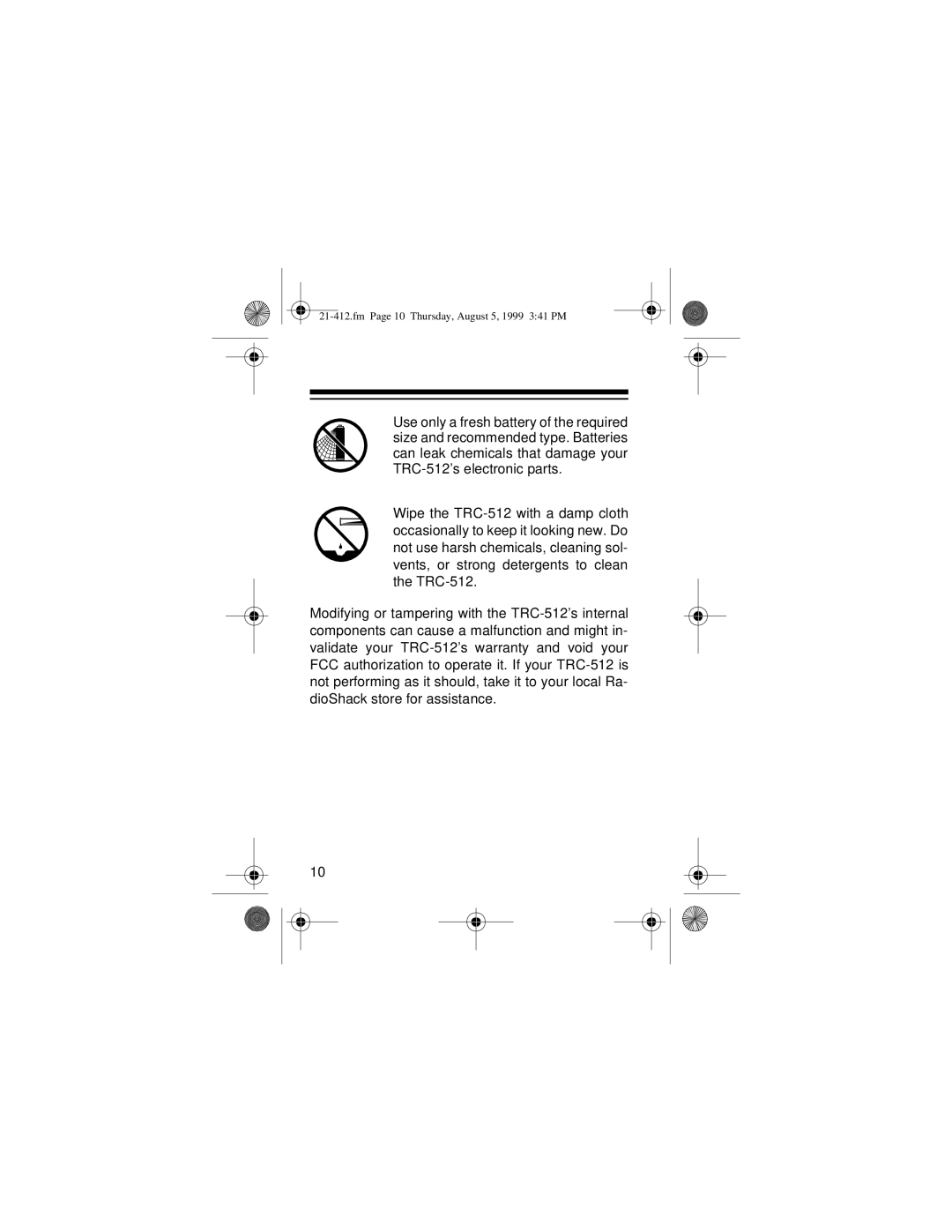TRC-512 specifications
The Radio Shack TRC-512 is a notable entry in the landscape of early personal computing, first introduced in the 1980s as part of Radio Shack's commitment to democratizing technology for the general public. This compact portable computer was designed for both amateur and professional enthusiasts who sought versatility at an accessible price.One of the standout features of the TRC-512 is its Zilog Z80A microprocessor, which operates at a clock speed of 4 MHz. This processor was quite popular at the time, owing to its simplicity and efficiency in handling basic tasks and programs. The TRC-512 came with a standard memory configuration of 64 KB of RAM, expandable up to 192 KB, which allowed users to run more complex applications and store larger amounts of data.
The TRC-512 was equipped with a built-in, high-resolution monochrome display that supported a modest screen size. This display featured sharp text rendering, which was ideal for word processing and programming tasks. Users appreciated the QWERTY keyboard layout, which was designed ergonomically, ensuring comfortable typing during lengthy sessions. The keyboard also included a set of special function keys, enabling shortcuts and enhancing productivity.
Connectivity was an essential aspect of the TRC-512. It featured a cassette tape interface for data storage, a common medium of the period. This allowed users to load and save programs and data onto cassette tapes, making the computer highly functional despite its limitations. Additionally, it supported various peripheral devices, including printers and modems, enabling users to extend its capabilities for tasks like printing and online communication.
In terms of software, the TRC-512 utilized the popular CP/M operating system, which was widely adopted in personal computing at that time. This operating system provided a robust platform for running software applications, ranging from productivity tools to games, fostering a diverse community of developers and users.
While the TRC-512 may seem limited by today’s technological standards, it played a vital role in paving the way for personal computing. It introduced many users to the world of computing, igniting interest in programming and technology, which would ultimately contribute to the rapid evolution of computer systems. Its affordability and practicality made it a beloved choice for many households and small businesses during its era. The legacy of the Radio Shack TRC-512 remains a significant chapter in computing history, representing the enthusiasm for innovation and accessibility that defined a generation of tech enthusiasts.

